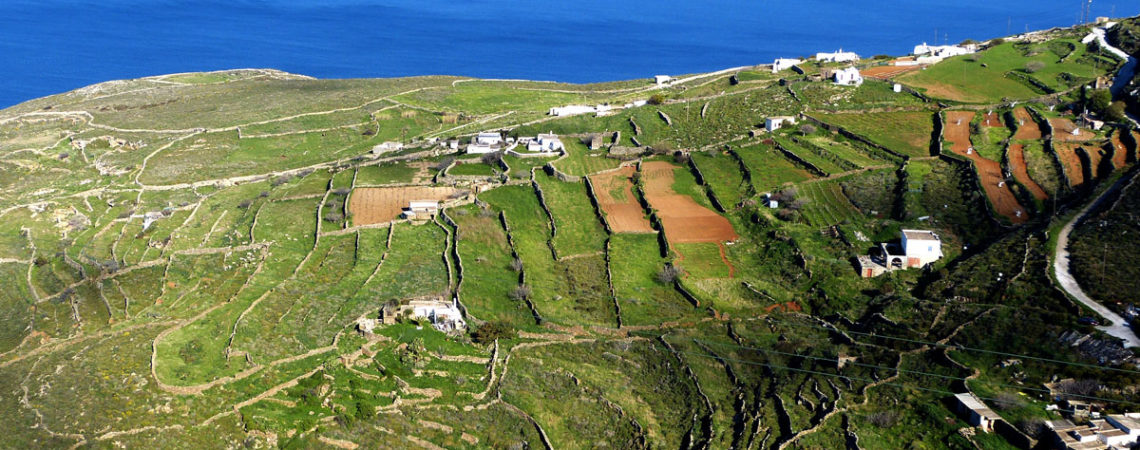The Upper Part of Syros is a typical and well-preserved example of Cycladic history, Cycladic economy and culture as well as its landscape and architecture.
It has history and archaeological sites that date back to the beginning of the Cycladic civilization (Kastri-Chalandriani, Delfinonisi – 3000 BC).
It has the rare archaeological site of Grammata, associated with the nautical communication of the people of the Cyclades who nurtured Cycladic culture from its inception.
It has rare geological formations which illustrate the geological history of the Aegean.
It has the intense and rich marine life which characterizes the area, as a continuation of and in common with the legally-established marine park of Gyaros.
It has a local economy based exclusively on small-scale agricultural and livestock production in a harsh terrain of steep slopes and dry stone walls.
Agricultural production is mainly without water, due to a severe water shortage that has always characterized most Cyclades Islands.
It has small cohesive settlements with predominantly single-storey buildings, with huts, threshing-floors, wells and many characteristic architectural constructions.
It has a wild natural beauty, which consists of steep hillsides, the scent of thyme and sage, old paths, terraces, steep hillsides,and wild valleys with pristine beaches protected from the north winds.
The Upper Part of the island, after decades of neglect and having so far escaped unregulated tourism development, is at an important crossroads. Will it pursue the overexploitation of the tourist industry, as have most of the Cycladic islands, or will it be able to retain its character and its history, to preserve and highlight its special features by moving on from the period of abandonment and embarking on a new period of light and sustainable development?
This is our vision: with the designation of the area as an Environmental and Geological Park, to protect all natural, architectural, geological and marine features, to maintain and restore human-built structures that form the living history of the area and the Cyclades in general, and finally for the area to become a centre for sustainable activities, such as walking and geological tourism, climbing, diving, fishing, ecotourism and the promotion of archaeological sites.
This is the main sustainable development which could save the Upper Part both from abandonment and from overexploitation by tourism.
Translated by Mamali Matina / Edited by Rupert Smith

